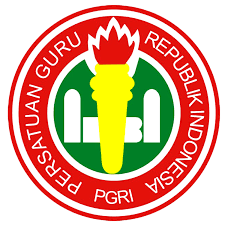Implementation of Ammonia (NH3) Gas Level Detection Tool in the Shrimp Processing Industry
DOI:
https://doi.org/10.36526/jeee.v1i2.2853Keywords:
Concentration, NH3, Ammonia, Gas ContentAbstract
Air contaminated with ammonia can cause respiratory problems, ammonia is colorless but has a pungent odor and is corrosive and highly toxic even at low concentrations. When ammonia enters the atmosphere and combines with air pollutants, especially nitrogen and sulfur oxide compounds from nearby vehicles, power plants and factories, it forms PM 2.5 which can be inhaled so that it can penetrate deeper into the lungs, increasing the risk of disease in the lower respiratory tract. lower. This research focuses on the implementation of an ammonia gas detector in a room that functions to detect air imbalances. This serves to overcome air pollution to employees who are in the shrimp factory production room, with this tool it can provide an early warning of excess ammonia gas in the shrimp factory production room to produce output. The ammonia gas detector in the industrial production room of the shrimp factory is based on ATMega 328P. The results showed that the average ammonia gas content in the storage room was within normal limits. The results showed that the average ammonia gas content in the storage room was within normal limits. However, the concentration of NH3 content can be increased by several other factors including the length of time of storage and the volume of shrimp in the storage room. The concentration of NH3 in the air ranges from 3-8 ppm in the shrimp storage room.
References
L. Nul Hakim, A. Taqwa, I. Ziad, J. Teknik Elektro, P. Studi Teknik Telekomunikasi Politeknik Negeri Sriwijaya Jl Srijaya Negara, and B. Besar Palembang, “Rancang Bangun Pendeteksi Kebocoran Gas Konsentrasi Amonia (NH3) menggunakan Modul Wifi ESP8266,” in Seminar Nasional Inovasi dan Aplikasi Teknologi di Industri 2019, 2019, pp. 193–196.
A. Saputra, I. Irfannuddin, and S. Swanny, “Pengaruh Paparan Gas Amonia Terhadap Perubahan Kadar Serum SGOT dan SGPT pada Kelompok Berisiko,” Biomedical Journal of Indonesia: Jurnal Biomedik Fakultas Kedokteran Universitas Sriwijaya, vol. 4, no. 1, pp. 32–39, Jan. 2018, doi: 10.32539/bji.v4i1.7956.
I. Kurniawan, A. Sholeh, D. Pra, D. Mariadi, and K. Kunci, “Pemeriksaan Amonia dalam Air Menggunakan Metode Fenat dengan Variasi Suhu dan Waktu Inkubasi,” Prosiding Seminar Nasional Kimia 2021, vol. 7, no. 1, pp. 77–82, 2021.
L. O. Muhamad et al., “Konversi Kadar Amonia (Nh 3 ) Dari Amonia Total (Nh 3-N) Menggunakan Alat Bantu Konversi Tanpa Data Salinitas,” Buletin Teknik Litkayasa Akuakultur, vol. 17, no. 2, pp. 161–165, 2019, [Online]. Available: http://ejournal-balitbang.kkp.go.id/index.php/iaj
S. Lestari, Bahaya Kimia, Sampling dan Pengukuran Kontaminan Kimia di Udara. Jakarta: Penerbit Buku Kedokteran EGC, 2010.
H. J. Utami, “Analisis Kadar Gas Amonia (Nh3) Terhadap Faktor Lingkungan Di Tempat Pemrosesan Akhir (Tpa) Piyungan Yogyakarta,” Yogyakarta, 2022.
H. Sampul Afifah Azzahra Zafany, “Analisis Kualitas Udara Untuk Parameter Nh3 Pada Jalan Tol Di Kota Makassar,” Makasar, Oct. 2021.
C. Perdana, “Gambaran Asupan Amonia (Nh3) Pada Masyarakat,” Jakarta, 2015.
K. A. Putri and S. Samsunar, “Determination of Ammonia (NH3) Sulfur Dioksida (SO2) and Total Suspended Particulate (TSP) Contet in Ambient Air at Sukoharjo Environmental Office Laboratory,” Indonesian Journal Of Chemical Research, vol. 5, no. 2, pp. 69–79, Dec. 2020, doi: 10.20885/ijcer.vol5.iss2.art4.
Downloads
Published
Issue
Section
License
This work is licensed under a Creative Commons Attribution-ShareAlike 4.0 International License.





















